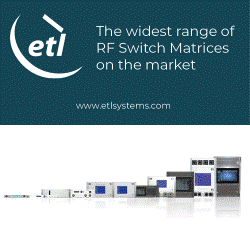Historic!
Thierry
Breton
December 8, 202
With the
political deal on the AI Act sealed tonight, the
EU becomes the first continent to set clear
rules for the use of AI.
The
final negotiation round—known as a "trilogue" in
Brussels jargon—between the EU Parliament, EU
Council, and EU Commission, spanned no less than
38 hours!
This
ultramarathon session demonstrates the vibrancy
of our democracy and the commitment of EU
leaders to find the right balance in the general
European interest.
The AI
Act is much more than a rulebook—it's a
launchpad for EU startups and researchers to
lead the global race for trustworthy AI.
Balancing user safety and innovation for
startups, while respecting fundamental rights
and European values, was no easy feat. But we
managed.
When I
joined the European Commission in 2019, I
embarked on a mission to organise our
“information space” and to invest in our
technological leadership – including in AI.
“Too
complicated, will take too much time, it’s
anti-innovation, let developers self-regulate…”
A number of companies, backed by non-EU
countries, tried to discourage us. They knew
that the first to establish rules has a
first-mover advantage in setting the global
standard. This made the legislative process
particularly complex – but not impossible.
Over
these past four years, we engaged in extensive
consultations and a democratic process to make
AI regulation a reality, with the European
Parliament and the 27 Member States.
During
this time, technology and its applications
evolved rapidly. So did our approach. For
instance, large general-purpose AI models gained
prominence, and business-to-consumer
applications, non-existent in 2019, rapidly
gained a vast user base. Our democratic bodies
adjusted the legal proposal to these changes,
always aiming to balance safety with innovation.
This
culminated in today’s final, successful
trilogue.
Highlights of the trilogue
§
Large AI Models (e.g. GPT4)
With
today’s agreement, we are the first to establish
a binding but balanced framework for large AI
models (“general-purpose AI models”), promoting
innovation along the AI value chain.
We
agreed on a two-tier approach, with transparency
requirements for all general-purpose AI models
and stronger requirements for powerful models
with systemic impacts across our EU Single
Market.
For
these systemic models, we developed an effective
and agile system to assess and tackle their
systemic risks.
During
the trilogue we carefully calibrated this
approach, in order to avoid excessive burden,
while still ensuring that developers share
important information with downstream AI
providers (including many SMEs). And we aligned
on clear definitions that give legal certainty
to model developers.
§
Protecting fundamental rights
We spent
a lot of time on finding the right balance
between making the most of AI potential to
support law enforcement while protecting our
citizens’ fundamental rights. We do not want any
mass surveillance in Europe.
My
approach is always to regulate as little as
possible, as much as needed. Which is why I
promoted a proportionate risk-based approach.
This makes the EU AI Act unique – it allows us
to ban AI uses that violate fundamental rights
and EU values, set clear rules for high-risk use
cases, and promote innovation without barriers
for all low-risk use cases.
During
the trilogue, we defined the specifics of this
risk-based approach. In particular, we agreed on
a set of well-balanced and well-calibrated bans,
such as real-time facial recognition, with a
small number of well-defined exemptions and
safeguards.
We also
defined various high-risk use cases, such as
certain uses of AI in law enforcement, workplace
and education, where we see a particular risk
for fundamental rights. And we ensured that the
high-risk requirements are effective,
proportionate and well-defined.
§
Innovation
We
developed tools to promote innovation. Beyond
the previously agreed regulatory sandboxes, we
aligned on the possibility to test high-risk AI
systems in real-world conditions (outside the
lab, with the necessary safeguards).
We also
agreed that future-proof technical standards are
at the heart of the regulation.
This
also includes certain environmental standards.
§
Enforcement
And
finally, we agreed on a robust enforcement
framework for the AI Act (distinguishing it from
the many voluntary frameworks around the world).
It
involves market surveillance at national level
and a new EU AI Office, to be established in my
services in the European Commission.
And it
includes tough penalties for companies that do
not comply with the new rules.
***
Europe
has positioned itself as a pioneer,
understanding the importance of its role as
global standard-setter.
Now, we
embark on a new journey.
That's
why I refer to the AI Act as a "launchpad". It
provides startups and researchers with the
opportunity to flourish by ensuring legal
certainty for their innovations.
This Act
is not an end in itself; it's the beginning of a
new era in responsible and innovative AI
development – fueling growth and innovation for
Europe.


.jpg)
%20(002)atlas.gif)



